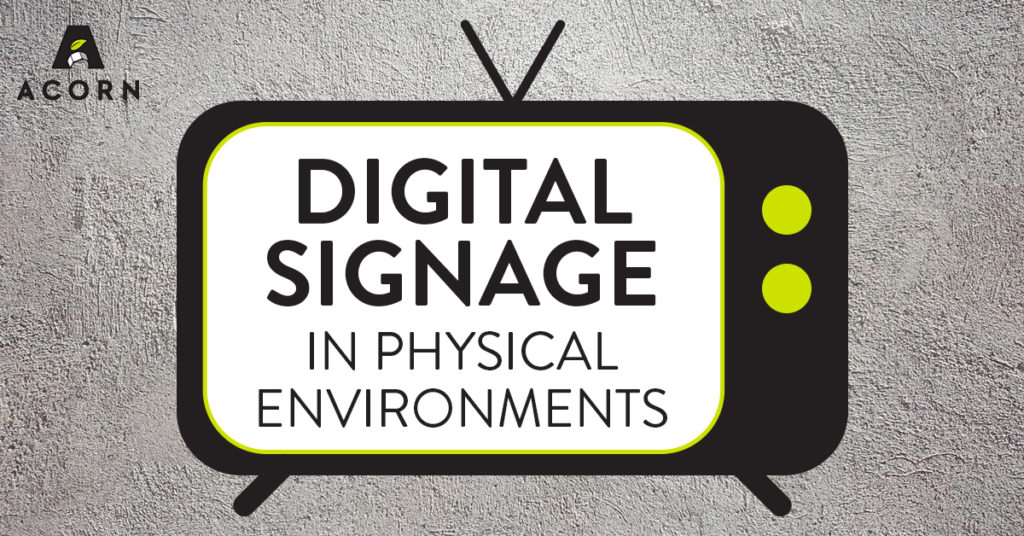
In the digital era, technology permeates every aspect of business and industry. The signage industry has adapted to incorporate digital signage into the traditional forms of signage and wayfinding. These developments have allowed accessibility through signage to adapt, improve and innovate.
Marrying Digital and Traditional Signage
The intersectional of traditional and digital formats fosters unique opportunities to marry the fundamental needs for signage in physical spaces with the all of the potential that technology allows. Building on these spaces with digital signage in addition to the traditional wayfinding methods expands how individuals can navigate their physical environment.
Customizable Signage
One of the greatest benefits of digital signage throughout physical environments is the ability to customize your messaging. The applications for digital signage are nearly endless, including everything from showing conference rooms reservations to providing interactive maps of expansive buildings. The customizable options that accompany digital signage make it an excellent choice for businesses who have changing needs throughout their built environment.
The Future of Accessibility
As technology advances, signage and assistive technology expansions provide new opportunities to support physically and mentally disabled individuals. High-traffic environments such as airports are incorporating digital signage to accommodate a wide range of disabled individuals. Innovations in technology have expanded the range of possibilities, such as the potential for assistive smart technology in devices like phones and watches. These ideas are just the beginning of how digital signage in physical spaces can broaden accessibility and inclusion for all.
One of the best examples of digital signage in a physical environment is the Minneapolis-St. Paul International Airport (MSP). MSP developed digital wayfinding solutions to provide travelers with any assistance they may need, including finding the quickest route to their gate, restaurant locations and menus throughout the airport, and ground transportation options. The touch screen directories located throughout the terminals also offer accessibility options for those who may have physical or mental disabilities. With endless interactive options, digital signage in MSP is a model for effective and innovative digital signage in built environments.
As experts in the Americans with Disabilities Act (ADA), we are focused on developing innovative signage that increases accessibility for individuals of all ability levels. Our team at Acorn is capable of assisting your business with a wide variety of signage options. We can integrate elements of digital signage into your built environments in order to help make your building more accessible for all. Contact us today at https://acornsign.com/contact/.
Sources:
